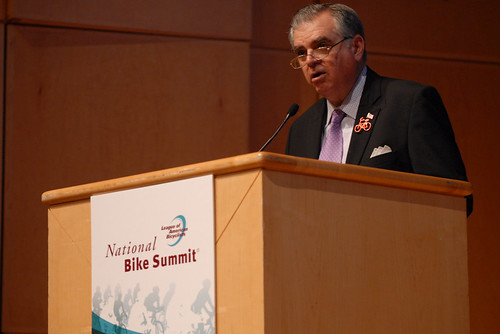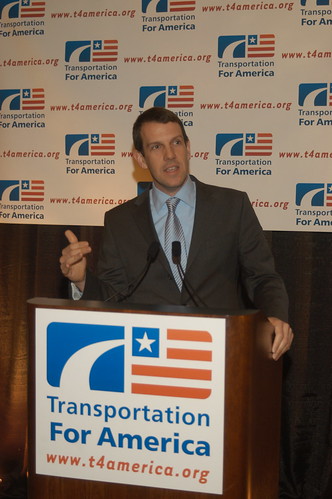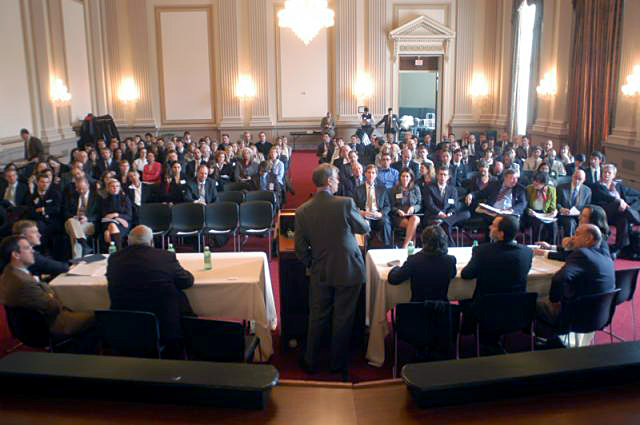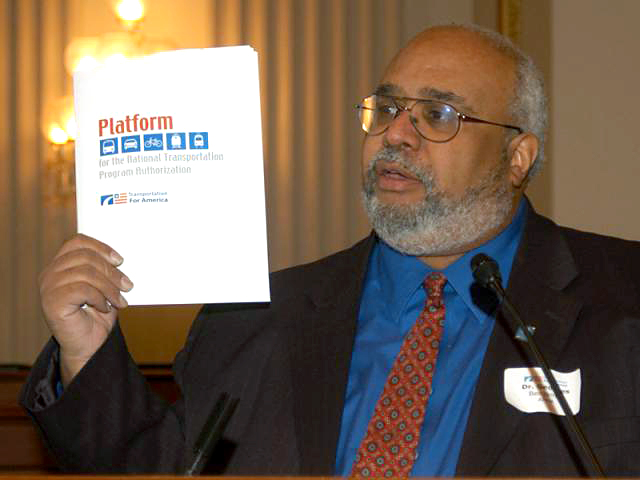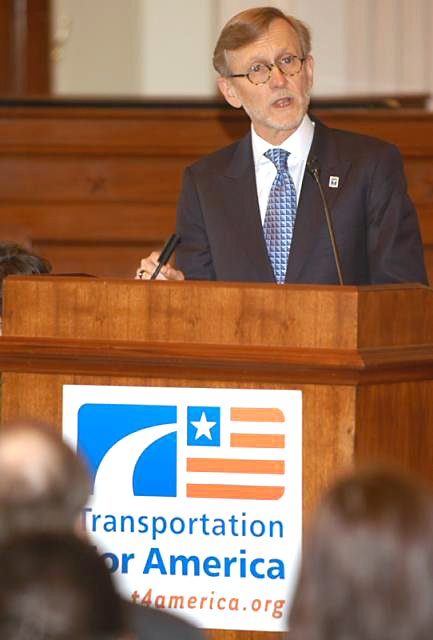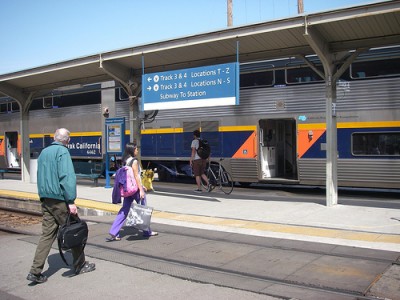 How could a new transportation bill revitalize rural and small-town America? That was the focus of a Senate Democratic Steering Committee briefing on “Issues and Innovations for Small Towns and Rural Communities” in the Capitol Visitors Center last Friday.
How could a new transportation bill revitalize rural and small-town America? That was the focus of a Senate Democratic Steering Committee briefing on “Issues and Innovations for Small Towns and Rural Communities” in the Capitol Visitors Center last Friday.
Transportation for America co-chair and former Meridian, Mississippi Mayor John Robert Smith shared his perspective as chief executive of a mid-sized city in a rural area. During his tenure, Smith initiated a renovation of Meridian’s historic train station, sparking growth and economic vitality in the downtown corridor that is now the “life of Meridian.” The improvements that he championed resulted in $135 million in capital investments around the station, and property values quadrupled in an area previously devoid of residents. More importantly, a vital aspect of mobility was restored for all residents of the area. Knowing firsthand how vital Amtrak service was to Mississippians, especially many traveling on fixed budgets, he helped lead the fight to restore the train route between Atlanta and New Orleans, and has continued his advocacy for passenger rail travel ever since.
Rural and small-town residents throughout the country are seeking more transportation options and want to ensure that they’re not left behind. Briefing panelists emphasized that transportation reform, far from leaving the heartland in the dust, can actually encourage growth and improve quality of life.
For one thing, improving rural transportation helps seniors. In 2000, 23 percent of older adults in America lived in rural areas, and as they age, they risk being isolated in their homes in the absence of adequate transportation infrastructure.  Broader accessibility is a challenge as well due to long distances some rural Americans must travel to reach employment, groceries and health services. And, intercity mobility remains limited in many parts of the country, cutting people off from friends, family and economic opportunity. During the briefing, Mayor Smith spoke not only about the economic benefits of revitalizing the area around the train station, but also about the transit service that connected low-income residents in Meridian’s HOPE VI housing development, ensuring their access to essential destinations.
Broader accessibility is a challenge as well due to long distances some rural Americans must travel to reach employment, groceries and health services. And, intercity mobility remains limited in many parts of the country, cutting people off from friends, family and economic opportunity. During the briefing, Mayor Smith spoke not only about the economic benefits of revitalizing the area around the train station, but also about the transit service that connected low-income residents in Meridian’s HOPE VI housing development, ensuring their access to essential destinations.
Enhancing transportation safety, relieving highway congestion by shifting goods movement to freight rail, investing in public buses and paratransit services and increasing intercity and multi-modal connectivity are some potential solutions for small cities and rural regions. T4 America staff have partnered with National Association of Counties and the National Association of Development Organizations, both of which were represented at the briefing, to help promote these solutions as vital parts of the upcoming transportation bill.
Far from leaving rural America out, a much-needed overhaul to our nation’s transportation policy can in fact provide a needed lifeline and help rural areas and smaller towns succeed as vital, livable places for all.
Rochelle Carpenter of Transportation for America contributed to this report.









